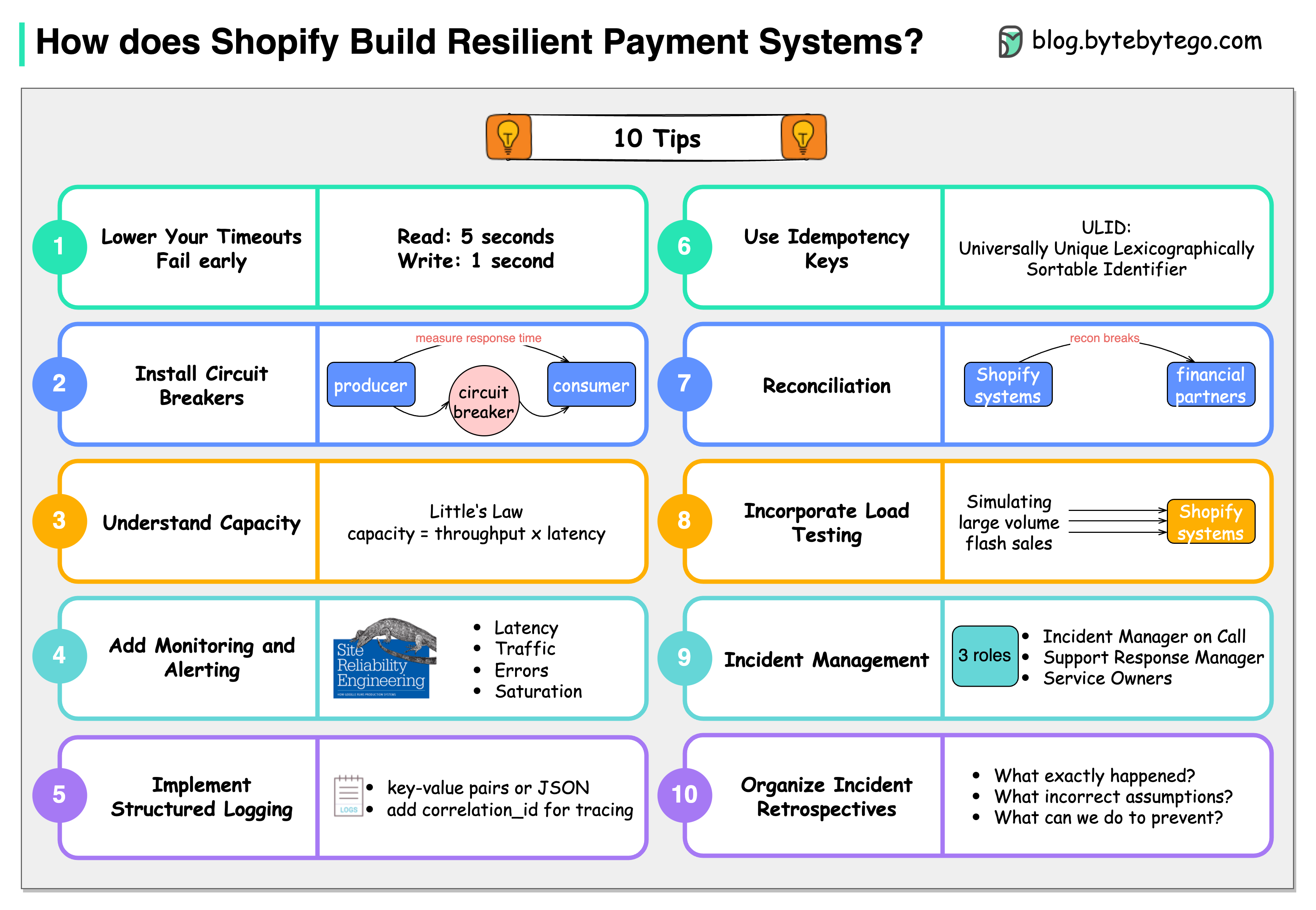10 principles for building resilient payment systems based on Shopify.

Shopify has some precious tips for building resilient payment systems.
The default timeout is 60 seconds. Based on Shopify’s experiences, read timeout of 5 seconds and write timeout of 1 second are decent setups.
Shopify developed Semian to protect Net::HTTP, MySQL, Redis, and gRPC services with a circuit breaker in Ruby.
If we have 50 requests arrive in our queue and it takes an average of 100 milliseconds to process a request, our throughput is 500 requests per second.
Google’s site reliability engineering (SRE) book lists four golden signals a user-facing system should be monitored for: latency, traffic, errors, and saturation.
We store logs in a centralized place and make them easily searchable.
Use the Universally Unique Lexicographically Sortable Identifier (ULID) for these idempotency keys instead of a random version 4 UUID.
Store the reconciliation breaks with Shopify’s financial partners in the database.
Shopify regularly simulates the large volume flash sales to get the benchmark results.
Each incident channel has 3 roles: Incident Manager on Call (IMOC), Support Response Manager (SRM), and service owners.
For each incident, 3 questions are asked at Shopify: What exactly happened? What incorrect assumptions did we hold about our systems? What we can do to prevent this from happening?